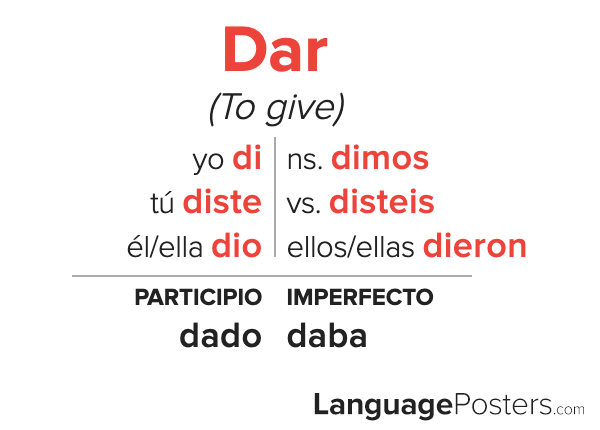


The reason for this is due to pronunciation! A couple of letters in Spanish have different sounds depending on which vowel follows them (learn more about this effect in our pronunciation blog post). There are three groups of verbs that change ONLY in the yo form in the simple past tense: Since these verbs end the same as the simpler verbs, they also undergo stem changes in the same form: yo tuve, yo contuve. One final thing to note about the stem-changing verbs in the past tense is that the verbs tener, venir, and decir are often the bases for other words with prefixes like contener or prevenir. With the verbs that change to include a J, note that in the third person plural form ( ustedes, ellos, ellas) there is NOT an i in the ending. When looking at the following stem-changing verbs in the pretérito, note that none of the forms have any accent marks like with the regular forms. There are only a handful of completely irregular verbs which we will look at below. No Spanish tense would be complete without some irregular forms! Many of the verbs have stem changes, while others have slight spelling changes. Don’t forget to put accents on the yo, usted, él, and ella forms of the Spanish past tense. On the other hand, habló has the emphasis on the second syllable where the accent is: hab-LO.Īccents may not seem that important, but they change the pronunciation drastically. When you say hablo, the emphasis is on the first syllable: HAB-lo. These verbs look the same but do not sound the same the accent, or tilde, makes all the difference. It looks just like the yo form in the present simple tense, just with an accent, right? If you don’t quite understand the context, don’t be afraid to ask! This can be a confusing thing even for native speakers.
Conjugation past tense spanish how to#
Now that you understand how the two past tenses are used, we will narrow our focus to the pretérito and see how to conjugate it. Teníamos una noche de juegos cada jueves.Ella jugaba básquetbol cuando era niña.Tomabamos café cada domingo cuando estabamos en la universidad.If you are talking about habitual past events or things you “used to” do, then use the imperfecto.Él me regaló una nueva bicicleta para mi cumpleaños.If you are talking about singular past events, or events that happened several times but NOT habitually, use the pretérito.In order to know which to choose, keep the following in mind: We used to have game night every Thursday.She used to play basketball when she was younger.We used to get coffee every Sunday when we were in college.El imperfecto is for actions that repeatedly took place in the past, or continual states (like time and weather).
Conjugation past tense spanish movie#
We went to the movie theater last Friday.El pretérito is for actions that took place one time.

Instead, two different tenses exist in Spanish that translate to the simple past in English: el pretérito and el imperfecto. However, it’s important to note that there is no pasado simple in Spanish. Specifically, in this blog post, we will focus on what we call the simple past in English. First of all, when we say the “past tense,” this phrase encompasses multiple different tenses (past simple, continuous, perfect, etc.).


 0 kommentar(er)
0 kommentar(er)
